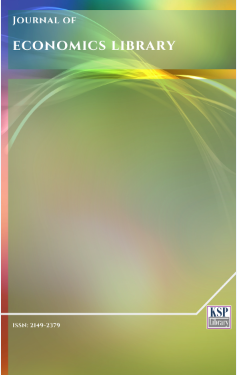Did Keynes Make His Case?
Abstract
Abstract. Paper considers Keynes’ case for fiscal stimulus under depression conditions – a case that remains prominent in both policy and academic literature. It highlights four specific real-history instances where, Keynes argued, monetary measures alone would not have restored prosperity and, hence, where fiscal activism would have been desirable. These were: 1) the depression of the 1890s; 2) the onset of the Great Depression in 1930; 3) the Roosevelt Recovery in 1933; and 4) the 1937-38 contraction in the US. But evidence from all four instances, gathered here, undermines Keynes’ claims... Paper then shifts to Keynes’ theoretical rationale, where it turns out that the frequently-cited “liquidity trap” argument was only one of several he advanced for monetary policy ineffectiveness. And it was not the one he most-often emphasized, while his own texts raise doubt about its coherence. Keynes view of Depression was intertwined with the stagnationist temper of economic theory during the middle 1930s, and with his cultural and aesthetic distaste for “capitalist individualism.” The weakness of Keynes’ real-history illustrations reflects in part Keynes’ flawed underlying critique of “classical” theory – a critique that, because it was so prominent, has often set back understanding. Keynes did not make his case.
Keywords. International macroeconomics, Money demand, Keynesian macroeconomics, Macroeconomic history.
JEL. B22, B31, E12, E41, E52, N10.Keywords
References
Federal Reserve data, [Retrieved from].
Friedman, M. (1992). Money Mischief: Episodes in Monetary History. New York: Harcourt Brace.
Irwin, D. (2011). Gold Sterilization and the Recession of 1937-1938, NBER Working Paper No. 17595. doi. 10.3386/w17595
Jastram, R. (1997). The Golden Constant.New York: Wiley.
Johnson, H.C. (1997). Gold, France, and the Great Depression, 1919-1932. New Haven: Yale University.
Keynes, J.M. (1924). Tract on Monetary Reform. London: Macmillan.
Keynes, J.M. (1930). Treatise on Money. New York: Harcourt & Brace.
Keynes, J.M. (1931). A Program of Expansion (General Election, May 1929). in Essays on Persuasion. London: Macmillan.
Keynes, J.M. (1936). General Theory of Employment, Interest, and Money. London: Palgrave Macmillan.
Keynes, J.M. (1989). Collected Writings of John Maynard Keynes. London: Macmillan.
Keynes, J.M. (1989a). Royal Commission on Indian Currency and Finance, 1926, Minutes of Evidence, 19, 480-524
Keynes, J.M. (1989b). Mr. Roosevelt’s Experiments,. London Times, 02 Jan 1934, 21, 297-304.
Keynes, J.M. (1989c). Roosevelt’s Economic Experiments. The Listener, 17 Jan 1934, 21, 305-309.
Keynes, J.M. (1989d). The Supply of Gold. Economic Journal, Sept 1936, 11, 490-498
Keynes, J.M. (1989e). The ‘Ex Ante’ Theory of the Rate of Interest. Economic Journal, 1937, 14, 215-223. doi. 10.2307/2225323
Keynes, J.M. (1989f). Keynes’ letter to Roosevelt, Feb 1938, 21, 434-439.
Krugman, P. (2013). Monetary policy in a liquidity trap. NYT, 11 April. [Retrieved from].
Leijonhufvud, A. (1981). Keynes and the Effectiveness of Monetary Policy. in Information and Coordination. New York: Oxford University.
Mill, J.S. (1909). Principles of Political Economy. London: Longmans, Green.
Mishkin, F. (1996). The Channels of Monetary Transmission: Lessons for Monetary Policy, NBER Working Paper No. 5424. doi. 10.3386/w5464
Mundell, R. (1963). Capital mobility and stabilization policy under fixed and flexible exchange rates. Canadian Journal of Economics and Politics, 29(4), 475-485. doi. 10.2307/139336
Mundell, R. (1968). Man and Economics: The Science of Choice.New York: McGraw-Hill.
Mundell, R. (1971). The Dollar and the Policy Mix. Essays in International Finance, No. 85, May (Princeton). [Retrieved from].
Skidelsky, R. (2005). John Maynard Keynes 1883-1946: Economist, Philosopher, Statesman. New York: Penguin.
Summers, L. (2012). Look beyond interest rates to get out of the gloom“, Financial Times, 3 June. [Retrieved from].
Sumner, S. (2015). The Midas Curse: Gold, Wages, and the Great Depression. Oakland: Independent Institute.
Svensson, L. (2008). What have economists learned about monetary policy over the past 50 years? January. [Retrieved from].
DOI: http://dx.doi.org/10.1453/jel.v3i2.828
Refbacks
- There are currently no refbacks.
.......................................................................................................................................................................................................................................................................................................................................
Journal of Economics Library - J. Econ. Lib. - JEL - www.kspjournals.org
ISSN: 2149-2379
Editor: [email protected] Secretarial: [email protected] Istanbul - Turkey.
Copyright © KSP Library

